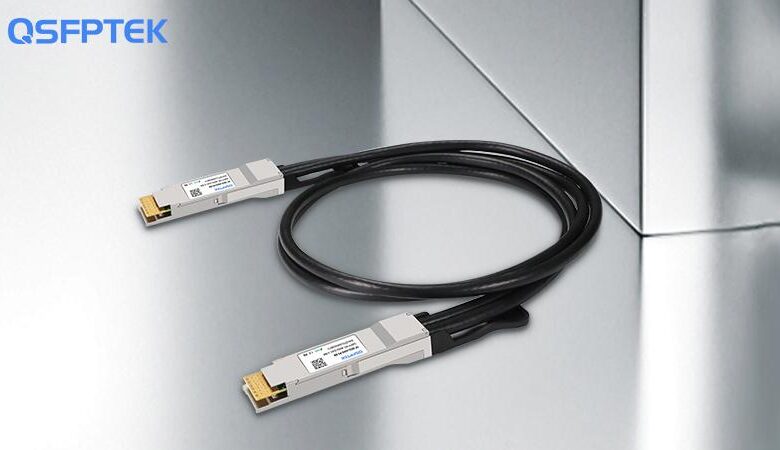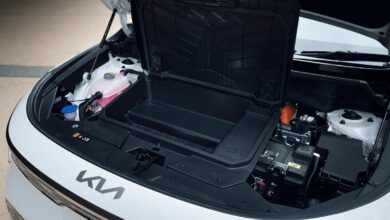How to Choose the Right 400G DAC Solution for Your Network?

In today’s high-speed networks, choosing the appropriate connection solutions is critical to ensuring efficient, reliable, and scalable data transfer. One of the most effective technologies for short-distance, high-bandwidth interconnections is the 400G Direct Attach Copper (DAC) cable. Used widely in data centers and enterprise networks, 400G DAC offers low latency, low power consumption, and cost-effective solutions for linking networking devices. This article will explore how to select the right 400G DAC solution based on technical specifications, application scenarios, and cost-efficiency, guiding you in making the best decision for your network environment.
400G DAC Overview
400G DAC, or 400G Direct Attach Copper, is a high-speed cable solution designed for short-range data transmission in data centers and enterprise networks. It supports data rates of 400 gigabits per second (Gbps), making it ideal for environments requiring fast, reliable connections. DAC cables are typically passive or active copper cables, used to connect devices like servers and switches. Due to its low cost and simplicity, 400G DAC is a preferred option for high-speed communication between devices within close proximity.
One of the defining characteristics of 400G DAC is its suitability for short-distance connections. This makes 400G DAC ideal for connecting devices within the same rack or across adjacent racks in a data center, ensuring low-latency communication between high-performance devices.
A key advantage of 400G DAC is its low power consumption. This makes DAC a more energy-efficient option, especially for environments focused on reducing operational costs and improving energy efficiency. The low power requirements of 400G DAC make it a popular choice for modern data centers aiming to minimize their carbon footprint while maintaining high-speed connections.
Typical Application Scenarios
Data Center Interconnects
One of the primary use cases for 400G DAC is in data center interconnects. DAC cables are ideal for connecting servers, switches, and storage devices within a single rack or across adjacent racks. These short-distance, high-bandwidth connections help facilitate rapid data transfer between devices, supporting tasks like virtualization, cloud computing, and storage replication. For machine-to-machine communication in a rack, DAC provides a plug-and-play solution with minimal setup.
High-Performance Computing (HPC)
High-Performance Computing (HPC) environments require ultra-low-latency, high-speed communication between computational nodes. In such environments, 400G DACs are highly suitable for connecting components like supercomputers and distributed computing clusters, ensuring rapid data exchange with minimal delay. The low-latency and cost-effective nature of DAC make it a favored solution in HPC scenarios where every microsecond counts.
Enterprise Networks and Cloud Service Providers
400G DAC also plays a vital role in enterprise networks and cloud service provider environments. With the growing demand for high-speed interconnectivity in cloud services, data centers, and storage networks, 400G DAC provides the bandwidth and scalability required to handle intensive workloads. Enterprises that manage large databases, provide cloud services, or handle big data analytics can benefit from DAC’s low-latency connections between core networking devices.
400G DAC vs. Other Connectivity Technologies
400G DAC vs. 400G Optical Transceivers
When comparing 400G DAC to 400G optical transceivers, the most significant difference lies in the transmission distance. While DAC is suitable for short-range connections, optical transceivers can cover much longer distances, typically reaching up to 10 kilometers or more. For data centers or enterprises that need long-haul connections across buildings or campuses, optical transceivers are the preferred choice. However, when it comes to cost-efficiency and power savings within short distances, 400G DAC holds a clear advantage due to its lower cost and simpler installation.
400G DAC vs. Active Optical Cables (AOC)
Compared to Active Optical Cables (AOC), 400G DAC tends to be more cost-effective for short-distance connections. AOCs use optical fiber, which allows for greater flexibility and longer distances compared to passive DAC. However, DAC’s lower cost and rugged construction make it a better choice for environments where the connection distance is limited and where durability is a concern. AOC is better suited for slightly longer distances where DAC falls short but still within the data center’s confines.
Practical Guide to Choosing 400G DAC
Selecting by Distance Requirements
The first step in choosing the right 400G DAC solution is to evaluate the distance requirements of your network. Since DAC is primarily designed for short-range connections, consider the physical layout of your data center and the distance between the networking devices you need to connect. For server-to-switch or switch-to-switch links within the same rack or across adjacent racks, DAC is ideal.
Compatibility with Existing Equipment
Ensure that the DAC cable you select is fully compatible with the networking equipment you are using. Compatibility issues can lead to performance degradation or even failed connections, so it’s important to check the port configurations of both your switches and servers before selecting a DAC solution.
Balancing Performance and Budget
Finally, it’s essential to strike a balance between performance needs and budget constraints. While DAC offers excellent performance for short distances, if your network requires longer-distance connections or scalability beyond the typical limits of DAC, you may need to consider alternative solutions like AOC or optical transceivers. In cases where high-performance, short-distance connections are required at a lower cost, DAC is the clear winner.
Conclusion
When selecting the right 400G DAC solution for your network, it is important to consider the technical specifications, application scenarios, and cost-efficiency. 400G DAC is an ideal solution for short-range, high-speed connections in data centers and enterprise environments, offering the benefits of low power consumption, simple deployment, and cost savings. By carefully assessing the distance requirements, compatibility with existing equipment, and balancing performance against budget, you can ensure that you select the most suitable DAC solution for your network needs.
Keep an eye for more news & updates on USATechMagazine!





